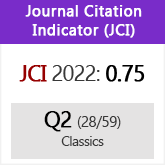Σωφροσύνη (αὐτή) in Julian’s Panegyric in honour to Eusebia, a depiction in context
DOI:
https://doi.org/10.3989/emerita.2012.05.1112Keywords:
σωφροσύνη, Emperor Julian (331- 363 d. C.), greek panegyrics, Empress Eusebia (†360), Pudicitia (Augusta), PenelopeAbstract
This paper analyses the virtue of σωφροσύνη in Julian’s Panegyric in honour to Eusebia, particularly Eusebia’s representation as Σωφροσύνη αὐτή. It is explored as a potential link between Σωφροσύνη αὐτή and an iconographic model called Pudicitia, spread over the Western and Eastern Roman Empire, as well as the relationship of Eusebia to Penelope, Ulises’ wife, in order to find the ultimate meaning of this depiction.
Downloads
References
Alonso del Real, C., Castillo, C. y Sánchez-Ostiz, A. 2010: Amiano. Historias (I), Madrid.
Angiolani, S. 2008: Elogio dell’imperatrice Eusebia (Orazione II). Introduzione, traduzione e note a cura di, Nápoles.
Athanassiadi, P. 1981: Julian. An intellectual biography, Londres.
Aujoulat, N. 1983: «Eusébie, Hélène et Julien», Byzantion 53, I, pp. 78-103; II, pp. 421-452.
Bidez, J. 1930: La vie de l’empereur Julien, Paris.
Bidez, J. 1932: L’empereur Julien. Ouvres complètes, I-1re (Discours de Julien César), París.
Borries, E. (von) 1919: s. v. Iulianos 26, RE X, coll. 26-91.
Fears, J. R. 1981: «The Cult of Virtues and Roman Imperial Ideology», ANRW II.17.2, pp. 827-948.
Fernández Delgado, J.A. 2007: «Influencia literaria de los progymnasmata», en Fernández Delgado, J. A., Pordomingo, F. y Stramaglia A. (eds.), Escuela y Literatura en Grecia antigua: actas del simposio internacional, Universidad de Salamanca, 17-19 noviembre de 2004, Cassino, pp. 273-297.
García Blanco, J. 1979: Juliano, Discursos I-V, Madrid.
García Ruiz, M. P. 2008: «Una lectura de la gratiarum actio de Claudio Mamertino a la luz de los primeros escritos de Juliano», Emerita 76.2, pp. 231-252. http://dx.doi.org/10.3989/emerita.2008.v76.i2.297
Höfer, O. 1965a: «Pudicitia», en Roscher, W. H. (ed.), Ausführliches Lexikon der griechischen und römischen Mythologie, Hildesheim (repr. Leipzig 1902-1909), III.2, cols. 3273-3277.
Höfer, O. 1965b: «Sophrosyne», en Roscher, W. H. (ed.), Ausführliches Lexikon der griechischen und römischen Mythologie, Hildesheim (repr. Leipzig 1909-1915), IV, cols. 1214-1215.
Hopfner, Th. 1936: «Theurgie», en RE VI A.1, col. 264.
Huart, P. 1978: «Julien et l’hellénisme, idées morales et politiques», en Braun, R. y Richer, J. (eds.), L’Empereur Julien. De l’histoire à la légende (331-1715), París t. I, pp. 99-123.
James, L. 2001: Empresses and Power in Early Byzantium, Londres.
Kaibel, G. 1965 (18781): Epigrammata Graeca ex lapidibus conlecta, Berlín.
Lichocka, B. 1976: «Pudicitia sur les monnaies romaines», Etudes et travaux 9, pp. 159-168.
Mattingly, H. B. 1966: Coins of the Roman Empire in the British Museum, vol. III Nerva to Hadrian, Londres.
North, H. F. 1966: Sophrosyne, Self-Knowledge and Self-Restraint in Greek Literature, Ithaca.
North, H. F. 1977: «The Mare, the Vixen, and the Bee. Sophrosyne as the Virtue of Women in Antiquity», ICS 2, pp. 35-48.
Portmann, W. 1988: Geschichte in der spätantiken Panegyrik, Fráncfort.
Ramos Jurado, E. 1997: Jámblico, Sobre los misterios egipcios. Introducción, traducción y notas, Madrid.
Ricciotti, G. 1956: Limperatore Giuliano l’Apostata: secondo i documenti, Milano.
Smith, R. 1995: Julian’s gods: religion and philosophy in the thought and action of Julian the Apostate, Londres.
St. Clair, A. 1996: «Imperial virtue: Questions of form and function in the case of four Late Antique Statuettes», Dumbarton Oaks Papers 50, pp. 147-162. http://dx.doi.org/10.2307/1291741
Suidae lexicon, Adler. A. (ed.) 1967-1971 [1928-19381], Stuttgart.
Suda On Line, s. u. «Sophrosyne», Adler number: sigma, 892, tr. Marcelo Boeri, ‹http://www.stoa.org/sol-entries/sigma/892› (25-11-2009).
Tougher, S. 1998: «In Praise of an Empress: Julian’s Speech of Thanks to Eusebia», en Whitby, M. (ed.), The Propaganda of Power. The Role of Panegyric in Late Antiquity, Leiden-Boston-Colonia.
Tsagalis, Ch. C. 2008:, Inscribing sorrow: fourth-century Attic funerary epigrams, Berlín.
Vatsend, K. 2000: Die rede Julians auf Kaiserin Eusebia. Abfassungszeit, Gattungszugehörigkeit, panegyrische Topoi und Vergleiche Zweck, Oslo.
Vogt, J. 1955: «Kaiser Julian über seinen Oheim Constantin den Grossen», Historia 4, pp. 339-352.
Vollkommer, R. «Pudicitia», LIMC VII.1, pp. 589-592; VII.2, pp. 463-465.
Wallies, M. (ed.) 1891: Alexandri Aphrodisiensis in Aristotelis Topicorum libros octo commentaria, Berlín.
Wright, W. C. 1980 (= 1913): The works of the emperor Julian, vol. I, Cambridge Mass.-Londres.
Wüst, E. 1937: «Penelope», en RE XIX.1, cols. 487-493.
Downloads
Published
How to Cite
Issue
Section
License
Copyright (c) 2012 Consejo Superior de Investigaciones Científicas (CSIC)

This work is licensed under a Creative Commons Attribution 4.0 International License.
© CSIC. Manuscripts published in both the printed and online versions of this Journal are the property of Consejo Superior de Investigaciones Científicas, and quoting this source is a requirement for any partial or full reproduction.All contents of this electronic edition, except where otherwise noted, are distributed under a “Creative Commons Attribution 4.0 International” (CC BY 4.0) License. You may read here the basic information and the legal text of the license. The indication of the CC BY 4.0 License must be expressly stated in this way when necessary.
Self-archiving in repositories, personal webpages or similar, of any version other than the published by the Editor, is not allowed.














